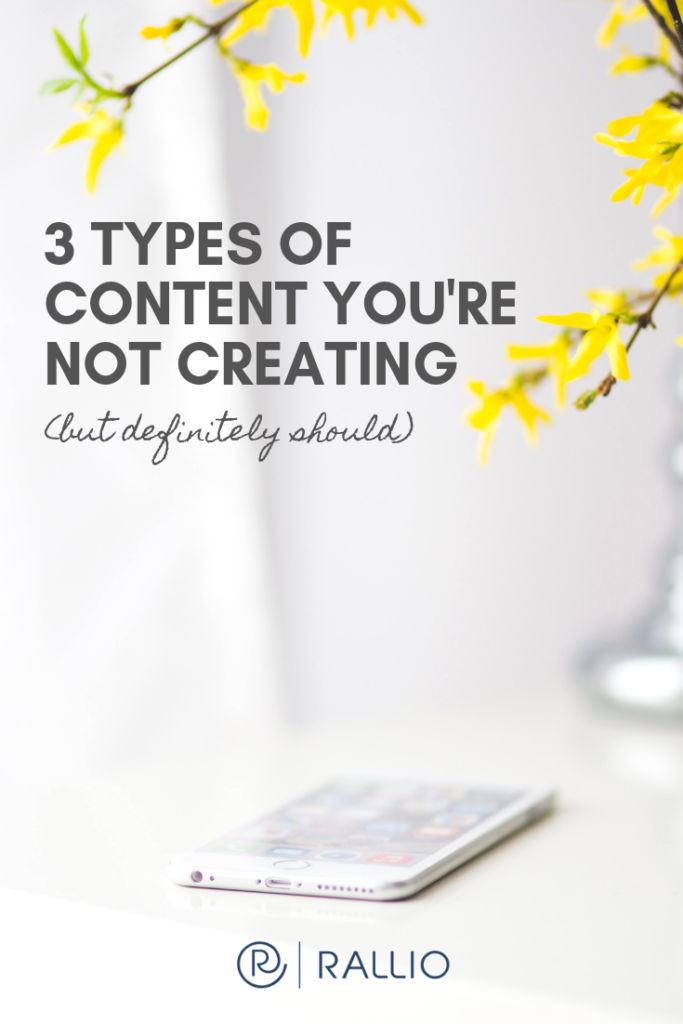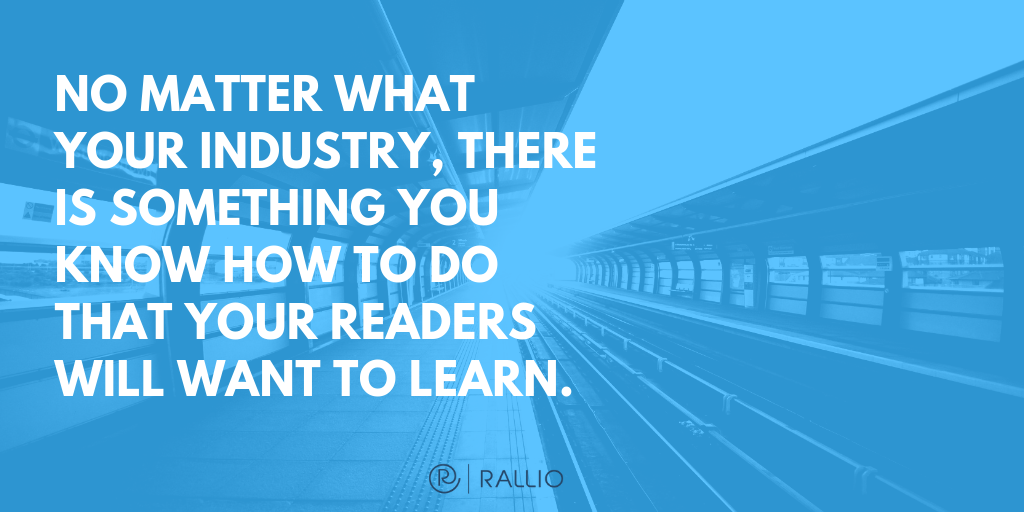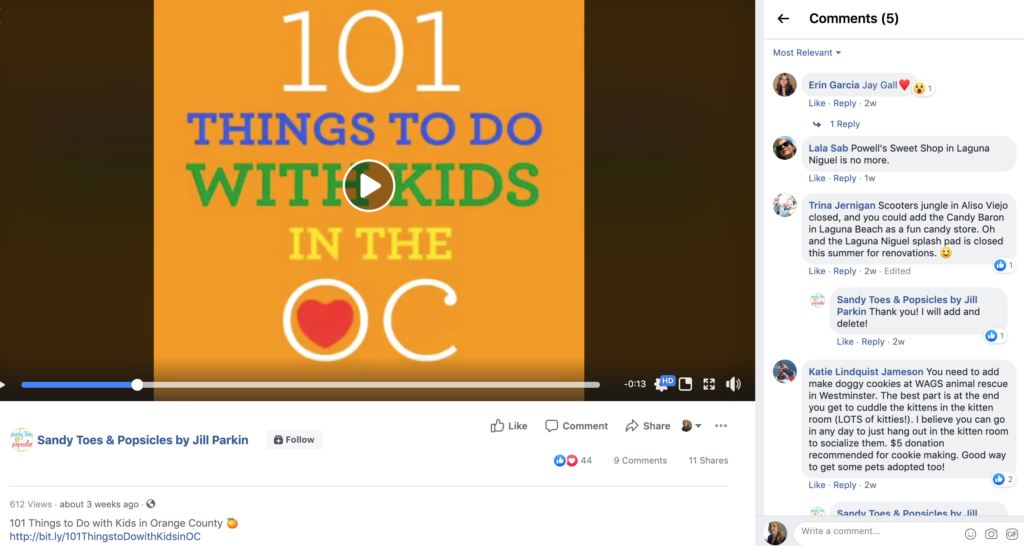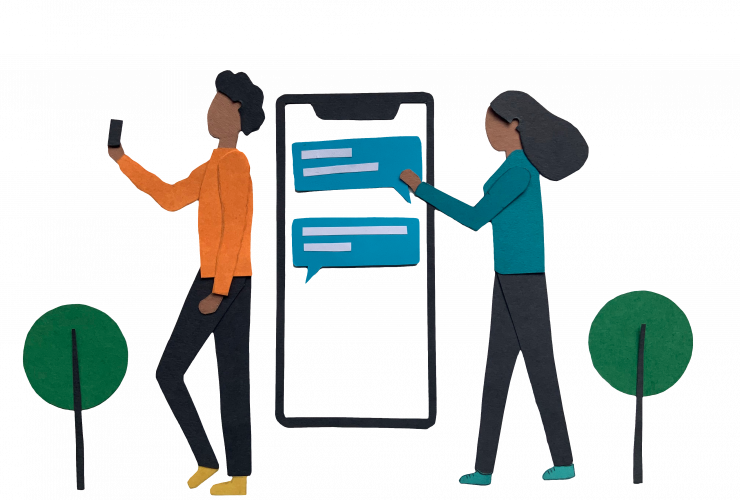3 Types of Content You’re Not Creating (But Definitely Should)
If a piece of content drops in the middle of Facebook and no one’s around to see it, did it even happen?
The answer is no, at least not in content marketing terms.
The whole point of creating content is to make sure people see it, engage with it, like it and share it — and ultimately, do business with you and become loyal customers and brand advocates.
And although there are many different types of content that get those results, this article is dedicated to three of them you might not have considered. In the short term, you’ll see a boost in likes, shares, comments and followers when you start posting them. And in the long term, you’ll build a community around your brand, and hopefully sales.

#1 Infographics
Many of us are visual people. We’re also busy people. Rather than take the time to read something in-depth, we might only have time to skim something — and that’s the brilliance of infographics. With an estimated 65% of B2B marketers using infographics as part of their content marketing strategy, according to the Content Marketing Institute, it’s evident that infographics are here to stay and need to be on your radar.
Studies show that readers will spend more time looking at images containing information than they will reading text, according to Nielsen Norman Group. What’s more, they’ll likely ignore “fluff” photos (think stock photos) that are merely decorative at best, mundane at worst, and don’t add any real depth to a page.
There are two takeaways here. First, infographics containing information of interest to your audience are more interesting, more useful and more likely to garner likes, shares and comments than low-value, boring photos. (The same can be said of authentic, real-life photos of people from your business. More value = more engagement.) Second, boring photos don’t belong on your page. Period.
Because they combine compelling visuals with valuable information of interest to your audience, infographics are some of the best kind of content you can produce. Not only can you share them on social media, but you can also incorporate them into a variety of content marketing initiatives, including case studies, emails, white papers and blog posts.
Be sure your infographics are branded with your logo and website so that as the images are liked and shared, your name will travel along with them. This way, you have an opportunity to position yourself as a trusted thought leader and get your name in front of a wider audience. You can also boost these posts on social media for a broader reach.
Pro Tip: You don’t have to be a graphic designing whiz to make infographics. Online apps such as Canva offer free templates that make it easy to plug in your info, add cool visuals, download and share.
#2 How-To Content
Bite-size, how-to pieces are content marketing gold. Like infographics, they allow readers to learn something new in an easy-to-read, digestible format. At the same time, they provide actionable steps. Give people step-by-step guides on topics of interest, and they’re sure to like, comment and share with their friends!
No matter what your industry, there is something you know how to do that your readers will want to learn. For example: Run a home improvement business? Put out a how-to on home-related projects, such as painting a room or hanging up pictures.

How-to content not only makes you an authoritative voice in your industry, but also builds good will among your customers. You’re giving them something for free without asking for anything in return, thus building trust and confidence in your brand. The next time these customers need your product or service, you’ll be top-of-mind.
For inspiration, think about the most common questions you get from your customers, and turn them into how-to articles, videos, podcasts and social media posts. Look through your direct messages, social media comments, online reviews and your own FAQ section on your website for ideas. Once you have a topic you know your readers are eager to learn more about, create an in-depth how-to answering the question.
Pro Tip: You can further repurpose these how-tos in a variety of ways — for instance, create an email campaign and send out a link to your how-to content. Always work to get the most mileage out of your content marketing initiatives by using them across multiple channels. It’s less work for you and potentially reaches more of your audience!
#3 Recognition Posts
Don’t you love when people talk you up? Admit it — it feels good when someone recognizes your work. And it probably makes you and your fans want to like, share and comment on such posts, right? Create an entire post or article that recognizes people or places in your industry you personally endorse, and that content will be liked, shared and engaged with, too.
There are many different ways to approach these “recognition posts.” A marketing firm could easily write a post about the “Top Facebook Marketing Experts” or something along those lines. However, these posts are also a great opportunity to create hyper-local content.
How about a roundup of the “Best Local Eateries” or “101 Local Spots to Take Your Kids in Summertime”? You know your town the best, as well as your customers. Think about the local spots your customers would be likely to go.

Again, this sort of helpful, free information goes a long way toward building trust and loyalty. Just be sure the content is substantial and not “thin” — you want people to get something out of the post and not walk away feeling like they just read a bunch of fluff.
Be sure to tag and link to any of the businesses or people you mention in your post so they can share it with their followers, too. The reach will grow exponentially according to the number of shout-outs you give! In other words, writing about 101 local spots — as daunting as that sounds — will give you more traction than just mentioning a handful.
You can take your “recognition posts” a step further by turning the recognition back toward yourself, too. At Rallio, we designed our Employee Advocacy program with this intention for our brands. By empowering their employees publish brand-approved content on their personal profiles, companies are able to significantly expand their organic reach and track all activity and results through our Employee Leaderboard.
Pro Tip: Once you’ve created a recognition post, give it some time to generate engagement. Later, you can approach the people or businesses you wrote about and ask them to link to you or create a mutually beneficial partnership, contest or promotion. Also, if you don’t feel you have the writing skills to tackle a lengthy post, outsource it to someone on your team or a freelancer who can do it for you.
What are some other types of content you’ve created that you’ve found to be the most effective? We want to hear your ideas in the comments.


